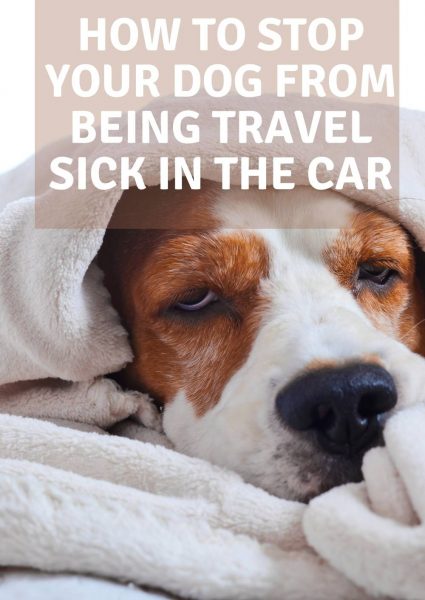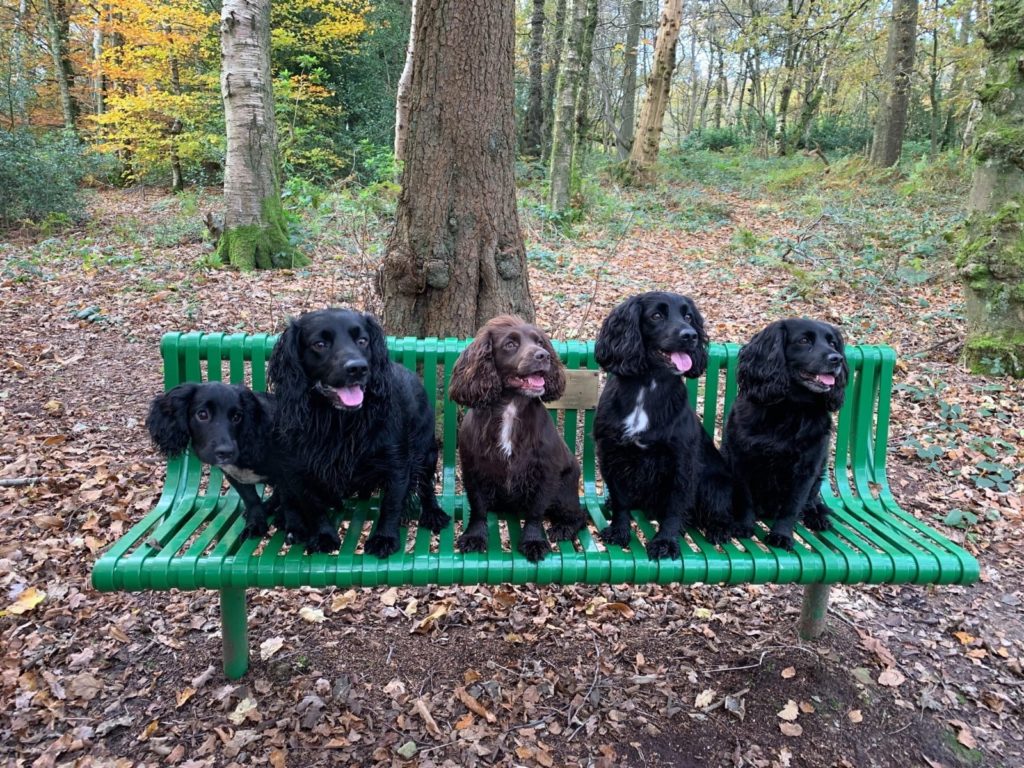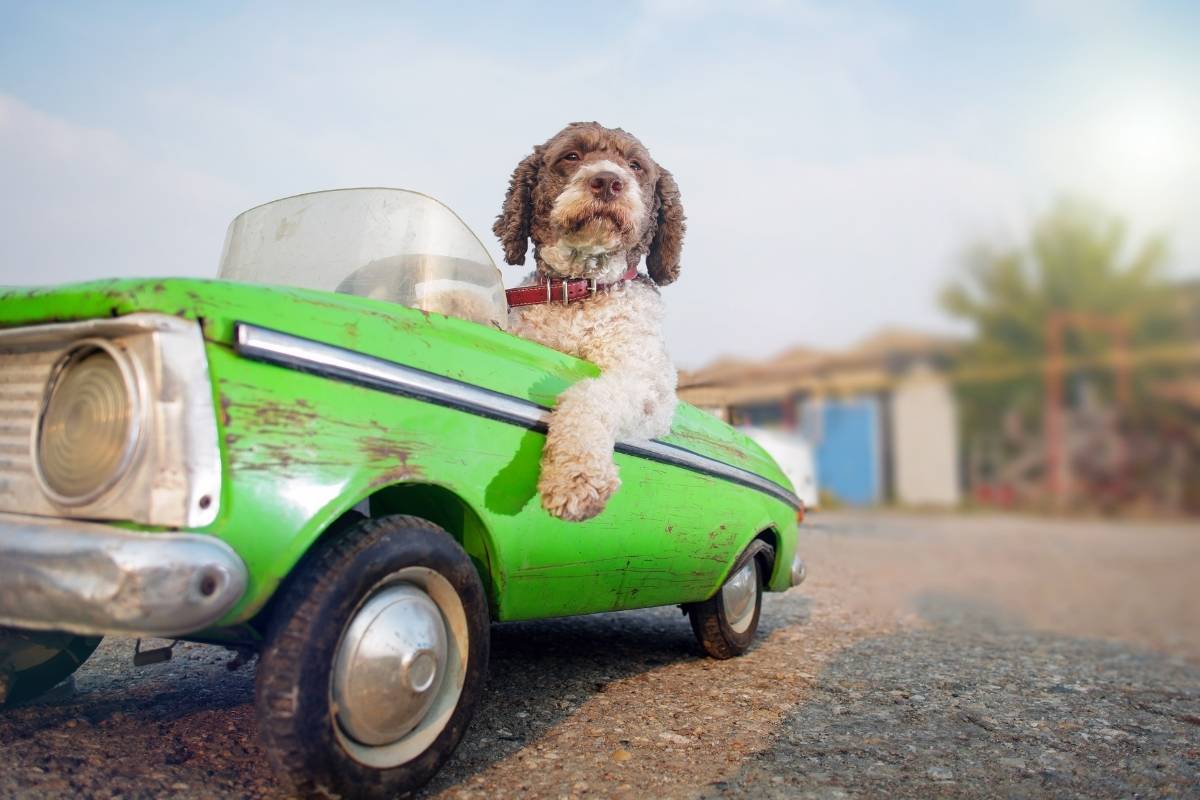If your dog gets travel sick in the car, you’re not alone. Some dogs get motion sickness when they are travelling and others can’t handle the smell of fumes.
If you don’t want to be cooped up in a car with an unhappy pup for hours on end, there are some things that you can do to help them feel better.
The first thing to do is find out what makes them nauseous so that it doesn’t happen again!
By driving smoothly and making sure that there is plenty of fresh air moving through your car you can reduce the chances of your dog being travel sick. Keep the inside temperature of the car at a comfortable level and take regular breaks to walk your dog. Make sure that your dog is comfortable and that he can lie down to sleep.
Your dog may suffer from motion sickness or car sickness when they are in the car. This is because your dog’s sense of balance is affected by their surroundings and what they see.
Some dogs can get motion sickness by looking out the window, while others feel better if they look at you or a fixed point inside the vehicle.
If your pet has this problem, then there are some things that you can do to keep them happy on long trips.

Break your journey down into smaller chunks
One thing that you need to do is stop frequently for breaks during longer drives so that your pets have time to explore, get some fresh air and relieve themselves.
It is always a good idea anyway to stop regularly when you are driving a long distance- the human passengers will need a break and, for the driver, regular breaks can help to prevent tiredness and accidents.
Make use of service areas and allow your dog to spend a few minutes sniffing around, getting some fresh air and take a break from travel. If you are eating or having a coffee then let your dog spend a while out of the car so that he can recharge his batteries and get some air.
[amazon box=”B07DX4VL4V” template=”horizontal”]
Give your dog a light meal before you set off
This may seem counter intuitive but it works for dogs as well as humans. With a light, high fibre meal in his tummy, your dog will be more likely to sleep while in the car and is less likely to experience nausea.
Eating a meal is a common strategy used historically to prevent ‘seasickness’ in humans which is just the same as car travel sickness – and it works.
The important thing to remember is to only give your dog a small meal that will settle his tummy and encourage him to sleep.
Something along the lines of porridge made with water would be a good choice.

Avoid long car journeys if you can
This may seem obvious but, if you don’t need to take your dog on a long journey, then don’t.
If you have a long journey planned then a good idea is to help your dog to become familiar with the car. Take a few short trips with your dog and make sure that he can have fun at the destination – a walk where he can run free, a trip to the beach.
By making the trip fun and short you help him to cope with any stresses that he might be experiencing when travelling in the car.
Remember your dog’s sense of smell
Your dog has an incredible sense of smell which is infinitely more powerful than any human’s.
He will be able to smell fumes and other smells inside the car which could make him feel unwell.
If you have air fresheners in your car, if you smoke or vape, if your car smells then any of these things could make him ill. He will also be more susceptible to fumes from your car and others on the road too.
Always make sure that there is enough fresh air in the car, wind windows down and keep the internal temperature low.
If you must smoke or vape, then wait until you stop for a break – just as your kids can’t choose about inhaling this type of pollution, neither can your dog.
Make your dog comfortable
Many people suggest that you should try to stop your dog from looking out of the windows as this can affect travel sickness.
One of the easiest and best ways to do this is by using something like a car crate. A good crate or cage inside the car will allow your dog to get comfortable while restricting the opportunity for him to look outside.
Minimising the potential for him to look at moving scenery will help to reduce the chances of motion sickness.

Talk to your vet
Travel sickness is dogs is common and most vets are familiar with the issue and can offer advice, guidance and, when necessary, appropriate medicines that can help to settle your dog down to minimise motion sickness.
If you are unable to work through your dog’s travel sickness then your vet will be able to help.
Improve your standard of driving
There are many causes of travel sickness in dogs but one of the main factors is poor driving.
Think about how you drive. If you are constantly braking, throwing the car around and a generally failing to anticipate your route and potential hazards, then you will be creating forces within the car that will cause your dog ( and human passengers ) to be thrown around inside the vehicle.
Try to drive more smoothly, slow down, look further ahead and take your time to anticipate so that you don’t need to be rough with your car.
Conclusion
Travel sickness in dogs can and does occur. Just like people even the most experienced and accomplished traveller can, at times, feel unwell and become nauseous or sick when in the car.
The best approach is to take your time, drive smoothly and make frequent stops to allow your dog to get some air and use the toliet.
Remember also that your vet is always the best source of advice and information when it comes to your dog’s health and wellbeing.




